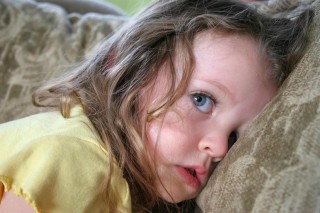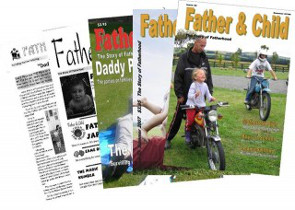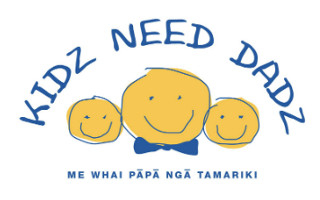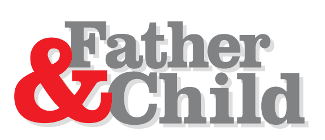Vulnerable Children
 The government is asking the public what to do about child abuse in New Zealand. They have outlined the issues in a ‘Green Paper on Vulnerable Children’ and seem determined to not simply leave this issue to the ‘experts’. Mark Stephenson has examined the Green Paper.
The government is asking the public what to do about child abuse in New Zealand. They have outlined the issues in a ‘Green Paper on Vulnerable Children’ and seem determined to not simply leave this issue to the ‘experts’. Mark Stephenson has examined the Green Paper.
Paula Bennett, minister of social development, has produced a discussion document, the Green Paper for Vulnerable Children. It asks: what should we do to improve the lives of vulnerable children in our society?
‘Vulnerability is difficult to measure and describe…’ begins the first paragraph of the Green Paper. Nonetheless, they estimate from research in New Zealand that 15% of children (163,000) are vulnerable.
To what, you might ask. Well, there are some facts available. Ten children, approximately, are murdered each year in New Zealand. We rank 4th worst in the OECD, even allowing for varying reporting methods. Most victims are under 2 years of age. The culprits usually are family members: mothers, step-fathers, fathers, in that order.
Those children were definitely vulnerable. The question is: can we identify them? If so, can we alter the outcome?
The Green Paper admits that information about children is incomplete and fragmented across government departments. There is a lack of cohesion and communication between professionals and agencies. Midwives, doctors, child-care centers, CYPFS and health services work in different frameworks and professional cultures, and do not necessarily share information or ‘trust’ each other. While recognising that workers in all these areas are dedicated to the welfare of their clients, the lack of co-ordination can mean that vulnerable children remain at risk. We have no national data-base of children, their needs and the agencies involved with them.
What causes ‘vulnerability’ is not clear but a number of factors often occur in families where children have been at risk. Health problems and disability, parental mental illness, drug and alcohol dependence, family violence are some of the frequent factors. For adolescents, vulnerability is a little different. Problems arise such as truancy, crime, drugs, alcohol, early sexual activity, pregnancy. Psychiatric illnesses become apparent at this age. The risks are more likely to be self-destructive than due to direct actions of carers, e.g., suicide, road accidents etc. However, it may be that the same early indicators of vulnerability in the family have been present.
On the positive side, ‘…research confirms the importance of fathers.’ Fathers are a positive influence in self-esteem, resilience, education, reduction of crime, substance abuse and teenage pregnancy.
According to the Green Paper, ‘…poverty in itself does not determine life outcomes.’ This is a truism – a smokescreen of apparent truth that is meaningless. Poverty is strongly associated with all bad outcomes for children, not only in New Zealand but throughout the western world. It interferes with cognitive and behavioural development, schooling, access to services and opportunities. It is recognised that poverty is a greater issue for some communities, e.g., Maori, Pasifica and refugee groups.
The Green Paper admits that nearly 20% of children live in poverty in Godzone. That figure is awfully similar to the percentage of vulnerable children. You have to wonder if it is largely the same group. The thrust of the Green Paper, however, is aimed at asking what can and should be done to help children. Fair enough.
Government does not want to take full responsibility for vulnerable children, saying that family, whanau, and communities must also bear some of this load. Their current priorities, apparently, are: improving CYPFS, improving access to services, and enhancing child health services. They propose four broad actions:
Sharing responsibility
There is much talk in this section about getting everyone involved, noting that ‘responsibility first lies with parents…’ They mention a review of spending on programmes for parents, and the importance of ensuring that fathers are included. Early intervention is thought to be more likely to be effective in protecting children.
They seem to be asking whether the balance is right, between supporting parents and protecting children. Should agencies step in sooner?
Showing leadership
Should we have a Vulnerable Children’s Action Plan? This could unify policy and targets across government departments. They could legislate – to mandate goals, accountability, progress reporting, changes to practice, information sharing etc.
They also ask whether they should work with Maori on reaching the vulnerable, and developing services – a no-brainer.
Child-centred policy making
This section is all about targeting funds to vulnerable children and evidence-based programmes, but there is a catch. If you would spend more money here, who would you take it from? Hip replacements?
They also want to know people’s thoughts on information sharing between professionals and the possible loss of privacy that would result. How much information, what information and who would be allowed to share it?
Would it be ok for adult carers of vulnerable children to receive preferential services? Would this disadvantage others?
Making services child-centred
This means changing the way people work with vulnerable children. It would involve training and mandating shared goals and practice so that groups of professionals communicate.
They are asking whether we should pay for a ‘workforce for children’ with all the training and collaboration involved.
Also, should departments such as WINZ, Housing, Emergency be able to ‘tag’ vulnerable children and communicate with each other freely? Or could this alienate and discourage families from seeking help?
Could early childhood education centers be used for a wider range of services – health, social work etc?
The Green Paper on Vulnerable Children does seem to be a genuine attempt to gauge opinion on this difficult topic. It is also testing the public’s reaction to issues such as government involvement in the ‘private’ life of families and loss of that privacy. It is feeling for the limit of acceptable intervention by the state, for the sake of improving the outcome of a significant number of our children.
Would it be too hard to make children and their welfare a priority, like the economy? To put children at the centre of political decisions? After all, we have a Ministry of Women’s Affairs to promote the position of women in society. What about children? Elevating the position of children and their rights would surely help us all. But how far are you prepared to go?
You can have your say at: saysomething.org.nz




